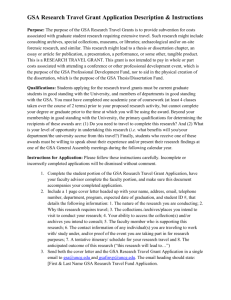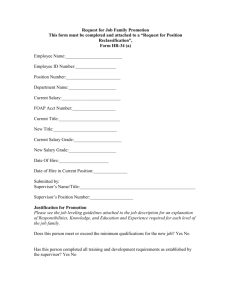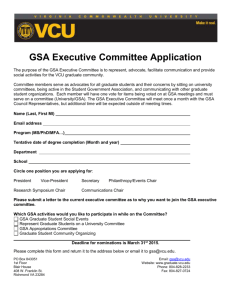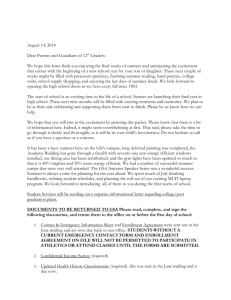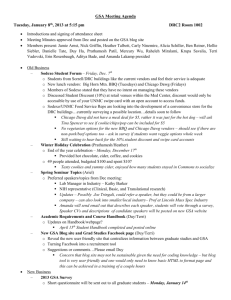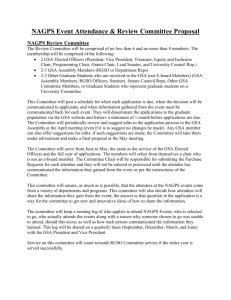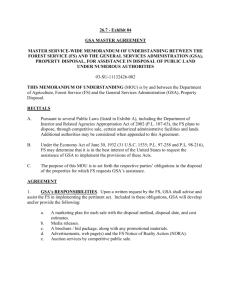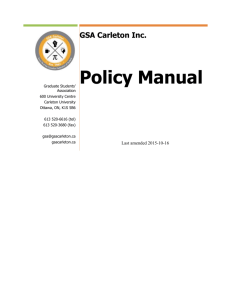Goal Development and Execution Worksheet
advertisement
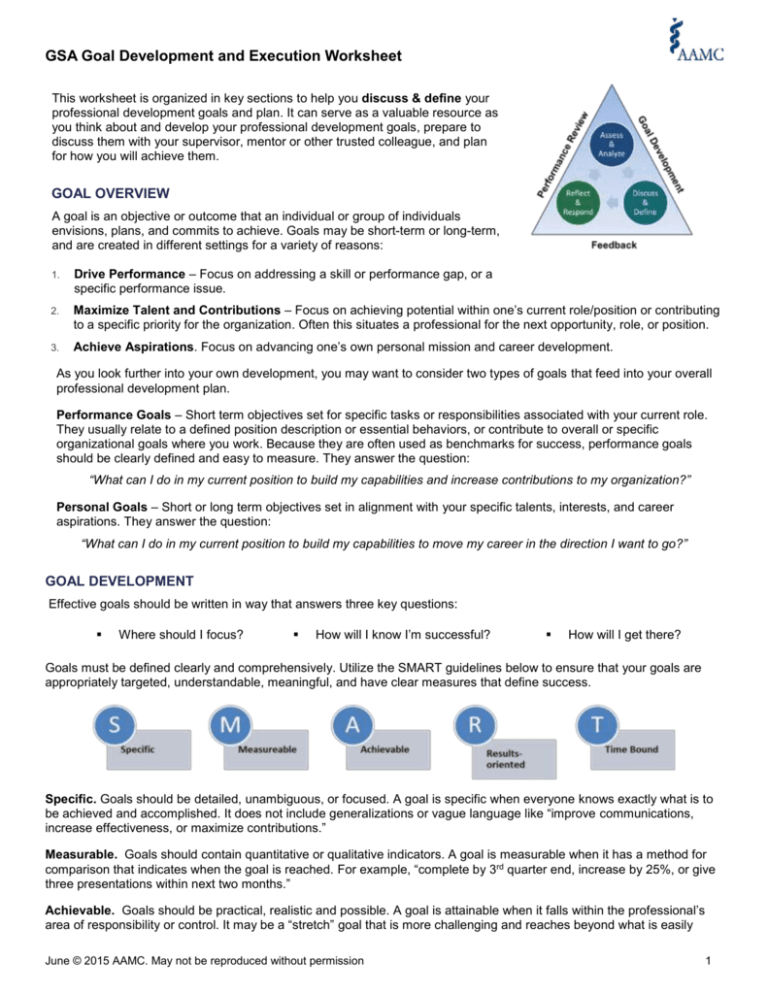
GSA Goal Development and Execution Worksheet This worksheet is organized in key sections to help you discuss & define your professional development goals and plan. It can serve as a valuable resource as you think about and develop your professional development goals, prepare to discuss them with your supervisor, mentor or other trusted colleague, and plan for how you will achieve them. GOAL OVERVIEW A goal is an objective or outcome that an individual or group of individuals envisions, plans, and commits to achieve. Goals may be short-term or long-term, and are created in different settings for a variety of reasons: 1. Drive Performance – Focus on addressing a skill or performance gap, or a specific performance issue. 2. Maximize Talent and Contributions – Focus on achieving potential within one’s current role/position or contributing to a specific priority for the organization. Often this situates a professional for the next opportunity, role, or position. 3. Achieve Aspirations. Focus on advancing one’s own personal mission and career development. As you look further into your own development, you may want to consider two types of goals that feed into your overall professional development plan. Performance Goals – Short term objectives set for specific tasks or responsibilities associated with your current role. They usually relate to a defined position description or essential behaviors, or contribute to overall or specific organizational goals where you work. Because they are often used as benchmarks for success, performance goals should be clearly defined and easy to measure. They answer the question: “What can I do in my current position to build my capabilities and increase contributions to my organization?” Personal Goals – Short or long term objectives set in alignment with your specific talents, interests, and career aspirations. They answer the question: “What can I do in my current position to build my capabilities to move my career in the direction I want to go?” GOAL DEVELOPMENT Effective goals should be written in way that answers three key questions: Where should I focus? How will I know I’m successful? How will I get there? Goals must be defined clearly and comprehensively. Utilize the SMART guidelines below to ensure that your goals are appropriately targeted, understandable, meaningful, and have clear measures that define success. Specific. Goals should be detailed, unambiguous, or focused. A goal is specific when everyone knows exactly what is to be achieved and accomplished. It does not include generalizations or vague language like “improve communications, increase effectiveness, or maximize contributions.” Measurable. Goals should contain quantitative or qualitative indicators. A goal is measurable when it has a method for comparison that indicates when the goal is reached. For example, “complete by 3rd quarter end, increase by 25%, or give three presentations within next two months.” Achievable. Goals should be practical, realistic and possible. A goal is attainable when it falls within the professional’s area of responsibility or control. It may be a “stretch” goal that is more challenging and reaches beyond what is easily June © 2015 AAMC. May not be reproduced without permission 1 GSA Goal Development and Execution Worksheet achieved. Refer to the proficiency levels within the GSA Performance Framework to help you identify an appropriate level of complexity and reach. Results-oriented. Goals should be written to include an action verb to describe the specific type of activity required to produce the desired result. For example, evaluate, develop, investigate, influence, enhance, appraise, implement, revise, etc. Time Bound. Goals should be performed and/or accomplished within a designated timeframe, schedule, or target date. A goal should also identify milestones via an action plan. See examples noted under “Measurable”. When developing your goals you are encouraged to: Reflect on your performance, what’s expected of you, and what you want to achieve – in your current role, and in alignment with your career aspirations and interests Consider opportunities to contribute in support of department, school, and community priorities Cultivate your point of view on your desired development to better advocate for yourself Balance your performance and personal goals, aiming to develop between 2-4 total goals Engage your supervisor, mentor, and other trusted colleagues for insights, affirmation, and support GOAL EXECUTION After collaborating with your supervisor or mentor in identifying your SMART goals, it’s important to stay engaged in the process to effectively execute your goals and achieve the results you desire. The next step is to work with your supervisor or mentor to pinpoint your specific path forward. Having an action plan and securing the necessary support, sets you up for success. Consider the following recommended activities: 1. Identify and secure specific development opportunities (e.g., project role, delegated task, workshop, articles) to gain the appropriate knowledge, skills, and experiences required to achieve your goals. 2. Identify and procure required resources and support to implement your plan, keeping in mind potential roadblocks and barriers you may face along the way. 3. Communicate your goals to key people who will advocate and help you obtain relevant opportunities and experiences, and identify resources. 4. Agree on how you will stay connected formally and informally with your supervisor, mentor, etc. to make sure you are successful. The following worksheet may be used to write out your goals, develop an action plan, and identify other key factors which may impact your ability to achieve the results you want. It can also serve as a focal point for your ongoing professional development discussions. June © 2015 AAMC. May not be reproduced without permission 2 GSA Goal Development and Execution Worksheet GOALS GSA Framework Alignment: Rationale (why?): (Competency areas, proficiency levels) Click here to enter text. Click here to enter text. Click here to enter text. Measures that Define Success/Desired Outcome (quantitative and/or qualitative measures/evidence of progression and achievement): Click here to enter text. Requirements for Success (Support/Resources/Materials Needed; consider potential roadblocks or challenges along the way): Click here to enter text. Plan for execution (key action steps, activities) Anticipated Dates (start/end/ongoing) Click here to enter text. Click here to enter a date. Click here to enter text. Click here to enter a date. Click here to enter text. Click here to enter a date. Click here to enter text. Click here to enter a date. June © 2015 AAMC. May not be reproduced without permission 3



